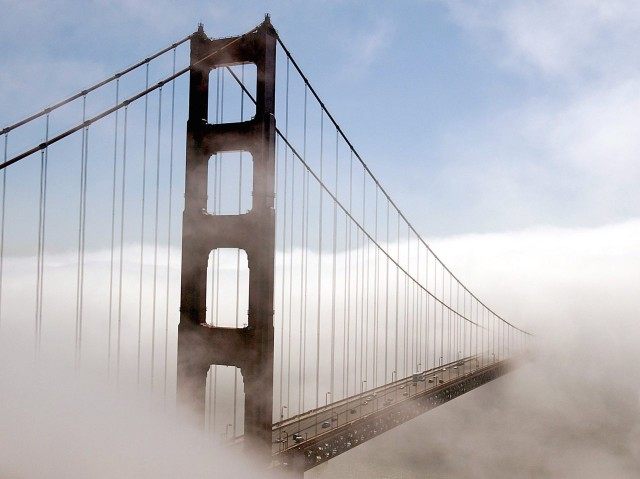Despite San Francisco not being an economically attractive location to site solar panels, the Board of Supervisors unanimously passed legislation this week requiring new construction in “Fog City” shorter than 10 floors to have at least 15 percent of rooftops “solar ready” — clear and unshaded — for installation of solar panels or water heaters.
For photovoltaic solar installations to operate efficiently, panels must be installed in the direction of daytime sun and positioned to avoid being shadowed by adjacent buildings.
San Francisco is very unattractive for solar because it is one of the densest cities in North America. With only 90 square miles of space, San Francisco has a population of about 825,111, and the tsixth-largest number of 150-meter-high buildings in the US.
But the City of San Francisco, whose nickname is “Fog City,” is even less attractive for efficient collation of photovoltaic energy, because it has one of the world’s heaviest annual concentration of sun-blocking coastal marine fog in the world.
Marine fog forms as a result of complex interactions between ocean evaporation, aerosols, atmospheric pressure, vertical air layering, onshore-offshore temperature gradients, and coastal mountain topography. The marine cloud layer provides moisture to the arid and semi-arid coast, especially in the warm summer months in California.
The unique topography of the San Francisco that generates the fog layer reduces average sun to five to eight hours per day. The sun blockage by fog is maximized during May through August, which are California’s sunniest days of the year, and usually the best time of the year to generate photovoltaic energy.
The San Francisco building commission engineers obviously know these basic facts about the relative unattractive nature of San Francisco as a “solar platform.”
But an American Political Science Review study by Chris Warshaw of MIT and Chris Tausanovitch from UCLA suggests why San Francisco continues to be the land of foolish progressive dreams.
Surveying 275,000 Americans on public policy to rank cities’ political leanings, the researchers found that city governments do, in fact, respond to the “will of their citizens.” As a consequence, liberal cities tend to have more progressive tax policies. According to policy preferences, San Francisco, Berkeley and Cambridge, Massachusetts are among the most liberal cities in the U.S. while Mesa, Provo and Waco are the most conservative.
To Fog City liberals, the move allowing San Francisco to take the bragging rights as the first major U.S. city to mandate solar panels on new construction, trumps climate and economics.
“By increasing our use of solar power, San Francisco is once again leading the nation in the fight against climate change and the reduction of our reliance on fossil fuels,” said Supervisor Scott Wiener, who sponsored the legislation. He added, “Activating underutilized roof space is a smart and efficient way to promote the use of solar energy and improve our environment.”

COMMENTS
Please let us know if you're having issues with commenting.